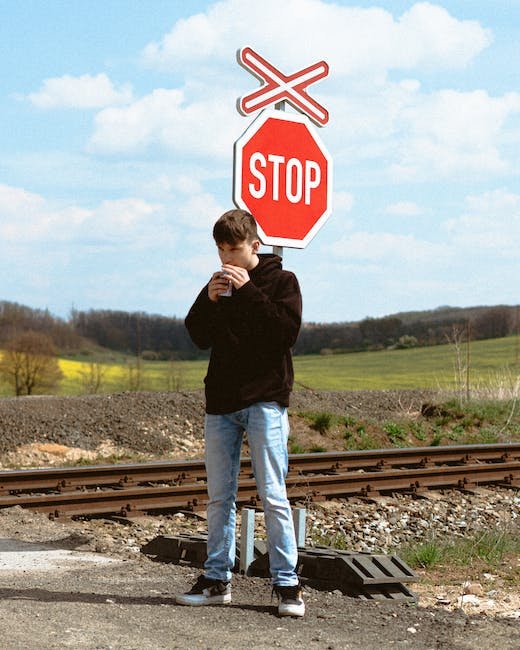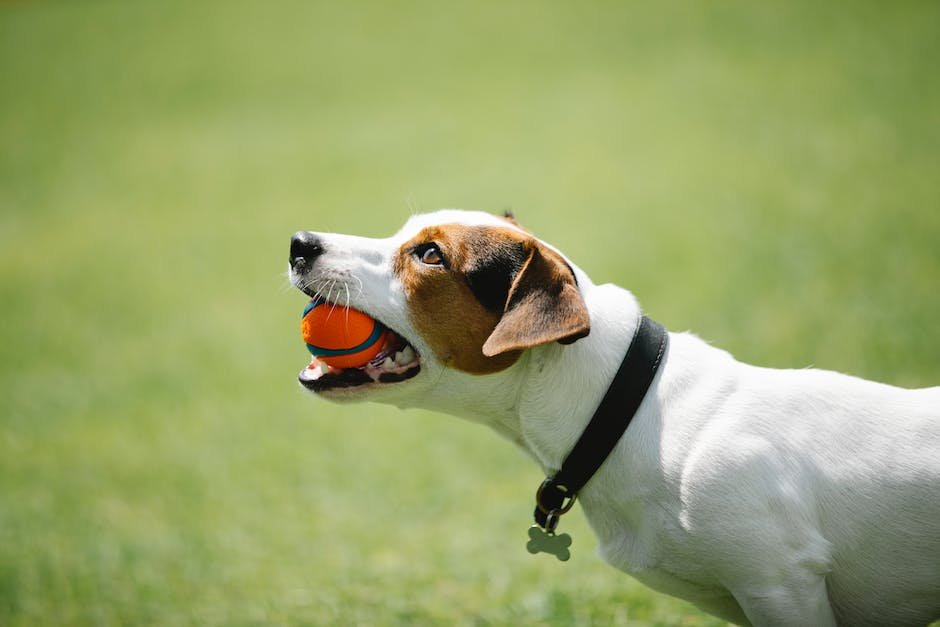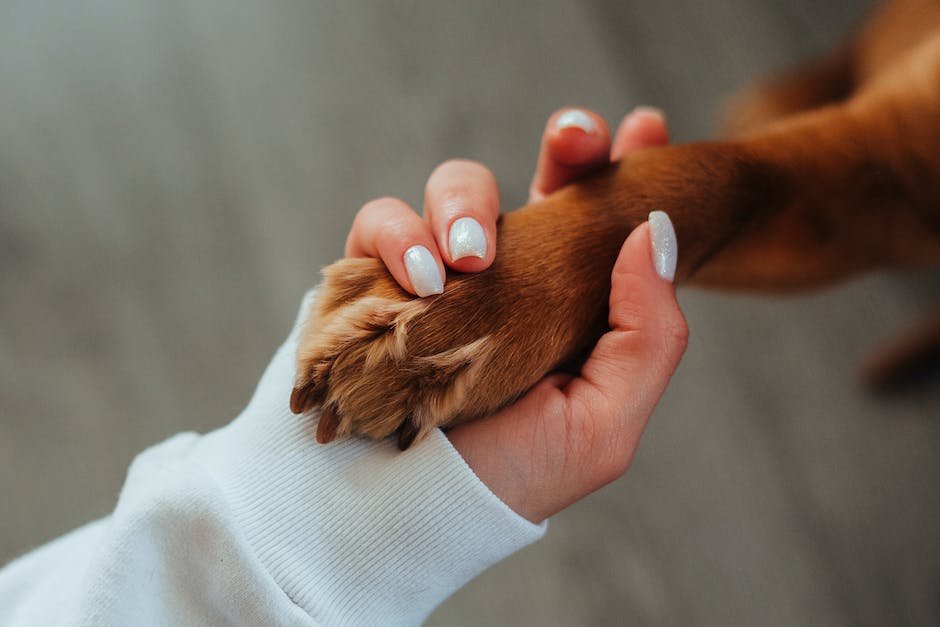As the sun peeks through the morning haze, a familiar chorus of barks and tail wags resonates through countless households. Potty training, a crucial aspect of pet parenthood, can often feel like tiptoeing through a field of landmines. But fear not, for there is a solution that promises to revolutionize the way we communicate with our four-legged companions during the housebreaking process. Enter dog training doorbells – the versatile gadgets that have become a paw-sitively ingenious tool in teaching your furry friend how to signal their bathroom needs. In this article, we’ll explore the role of these unassuming doorbell devices and unravel the secret behind their success in potty training our beloved canines. Get ready to tap into the world of doggy doorbell diplomacy, where every jingle takes you one step closer to building a harmonious bond with your pet.
Table of Contents
- The Power of Signal Training in Potty Training Dogs
- Essential Features to Look for in a Dog Training Doorbell
- Choosing the Right Training Method for Your Dog’s Needs
- Effective Strategies for Consistency and Positive Reinforcement in Potty Training
- Expert Advice on Incorporating Dog Training Doorbells into Your Potty Training Routine
- Q&A
- Concluding Remarks

The Power of Signal Training in Potty Training Dogs
Potty training dogs can be a challenging task, but incorporating signal training can greatly enhance the effectiveness of the training process. With signal training, dogs can learn to associate specific cues or signals with the act of going potty, making it easier for them to understand what is expected of them.
One of the most powerful aspects of signal training is its ability to establish a clear communication channel between the owner and the dog. By using consistent signals, such as a specific hand gesture or verbal cue, dogs quickly learn to recognize and understand what is being asked of them. This makes the potty training process more efficient and reduces confusion for both the owner and the dog.
Signal training can also help with consistency and reinforcement. For instance, by consistently using the same signal each time the dog needs to go potty, they will learn to recognize and respond to that signal more effectively. Additionally, during the training process, positive reinforcement techniques can be used in conjunction with the signals, such as praise or treats, to further encourage desired behavior.
- Benefits of signal training in potty training dogs:
- Establishes clear communication between owner and dog
- Reduces confusion and reinforces consistency
- Enhances the dog’s understanding of expected behavior
- Can be combined with positive reinforcement techniques
- Effective in speeding up the potty training process
Overall, signal training is a powerful tool that can greatly aid in potty training dogs. By establishing clear signals and utilizing positive reinforcement techniques, owners can create an effective and efficient training process that leads to success. With patience, consistency, and the power of signal training, potty training can become a more enjoyable and rewarding experience for both the owner and their furry friend.

Essential Features to Look for in a Dog Training Doorbell
When it comes to choosing a dog training doorbell, there are a few key features that can make the training process a breeze. Here are some essential features to consider:
- Easy Installation: Look for a doorbell that is simple to install without the need for complex wiring or tools. A hassle-free installation process will save you time and frustration.
- Adjustable Volume: Dogs respond differently to various sounds, so having an adjustable volume feature can help cater the doorbell to your pet’s needs. Whether your furry friend is sensitive or you simply prefer a softer chime, being able to select the right volume is crucial.
- Durable Construction: Dogs can be enthusiastic and sometimes even a little rough, so choose a doorbell made from sturdy materials that can withstand their excitement. Opt for options that are weather-resistant and built to last.
- Multiple Chime Options: Adding variety to your dog’s training routine can be beneficial. Look for a doorbell that offers multiple chime options, allowing you to switch things up and prevent your pet from becoming desensitized to a single sound.
- Wireless Range: Consider the size of your home and your dog’s training needs. Ensure that the doorbell you choose has a wireless range that can cover the necessary distance, whether you have a small apartment or a larger house.
By considering these essential features, you’ll be well on your way to finding the perfect dog training doorbell to help teach your furry companion to communicate their needs effectively.

Choosing the Right Training Method for Your Dog’s Needs
When it comes to choosing the right training method for your beloved furry friend, it’s essential to consider their unique needs and temperament. Understanding your dog’s personality will help you determine the most effective approach to achieve desirable behavior. Here are a few tips to guide you through the decision-making process and ensure a harmonious training experience.
- Positive Reinforcement: This training method focuses on rewarding your dog’s desirable behavior with praise, treats, or play. By reinforcing positive actions, you create a strong bond with your pet and motivate them to repeat those behaviors. Positive reinforcement is a gentle and encouraging way to train your dog, suited for dogs who respond well to rewards and have a sensitive disposition.
- Clicker Training: Utilizing a small device that emits a distinct clicking sound, clicker training is a popular technique that reinforces positive behavior. When your dog performs the desired action, the clicker noise is followed by a treat or praise. Over time, they associate the clicker with good behavior, allowing you to shape and reinforce specific actions effectively. This method is ideal for dogs that are highly food motivated or enjoy working for rewards.
- Counter Conditioning: This approach is commonly used for dogs with fear or aggression issues. It involves exposing your dog to the trigger that causes their undesirable behavior and pairing it with something pleasant. By doing so, you gradually change your dog’s negative association with the trigger into a positive one, helping them to overcome their fears or aggression. Patience and consistency are key when employing counter conditioning methods.
Remember, each dog is unique, and what works for one may not necessarily work for another. It’s essential to be patient, flexible, and observant during the training process. If you’re unsure which method to choose or encounter challenges along the way, consider consulting a professional dog trainer who can provide personalized guidance and support.
Effective Strategies for Consistency and Positive Reinforcement in Potty Training
Consistency is key:
- Potty training can be a challenging milestone for both children and parents. One of the most effective strategies to ensure success is to establish a consistent routine. By setting regular bathroom breaks throughout the day, your child will begin to understand the expectations and develop a sense of responsibility. Consistency also extends to using the same language, cues, and rewards during the training process. This provides a clear and structured approach for your little one, helping them to grasp the concept of using the potty.
- Consistency isn’t just about the routine; it also applies to expectations and boundaries. When accidents occur, remain calm and remind your child of the correct behavior. Help them understand that accidents happen and encourage them to try again. Consistently reinforcing positive behavior while redirecting unwanted behavior will reinforce learning and motivate your child to continue their progress.
Positive reinforcement:
- Potty training can be a daunting task, but using positive reinforcement can make the process more enjoyable for both you and your child. Praising even the smallest progress and victories is essential in building confidence and motivation. Offering words of affirmation, such as “great job!” or “you’re doing so well!” encourages your child to associate using the potty with positive emotions.
- Another effective form of positive reinforcement is implementing a reward system. Consider using a sticker chart where your child earns stickers or small treats for successful trips to the potty. As they accumulate stickers, they will feel a sense of accomplishment and pride in their potty training journey. This simple yet powerful tool can provide additional motivation and help reinforce desired behavior.
Remember:
Potty training can take time, and every child is different. Be patient with your little one and celebrate each milestone achieved. With consistency, positive reinforcement, and a loving approach, potty training can become a successful and empowering experience for both you and your child.
Expert Advice on Incorporating Dog Training Doorbells into Your Potty Training Routine
When it comes to potty training your furry friend, incorporating dog training doorbells can be a game-changer. These clever devices help your pup communicate when nature calls, making the training process smoother and more efficient. Here are some expert tips to help you seamlessly integrate these doorbells into your potty training routine:
- Introduce the Doorbell: Start by introducing the dog training doorbell to your pet in a positive and encouraging manner. Hang it on the doorknob or a designated spot near the door. Allow your dog to sniff and explore it, associating it with a pleasant experience.
- Go for Training Sessions: Dedicate regular training sessions solely for teaching your dog how to use the doorbell. Begin by gently nudging their nose towards the doorbell and giving it a gentle tap. As soon as your pup touches or interacts with the doorbell, reward them with verbal praise and treats to reinforce the behavior.
- Establish a Routine: Consistency is key in any training process. Establish a fixed routine for your dog’s potty breaks and include the use of the doorbell. Take your furry friend to the designated potty area at regular intervals and ask them to ring the doorbell before going out. With time and practice, they’ll start associating the doorbell with going potty and make the connection themselves.
Remember, the training process may take time and patience. Some dogs learn quickly, while others may need more practice. Stay consistent, reward positive behavior, and soon enough, your furry friend will become a pro at using the dog training doorbell during potty breaks!
Q&A
What are dog training doorbells?
Dog training doorbells are specially designed tools that help train dogs to alert their owners when they need to go outside to potty. They usually consist of bells that hang from the doorknob, allowing the dog to easily reach and manipulate them.
How do dog training doorbells help with potty training?
Dog training doorbells provide a clear and consistent way for dogs to alert their owners when they need to go outside. By associating the ringing of the bells with going outside to potty, dogs quickly learn to use the doorbells as a signal.
Are dog training doorbells effective for all dogs?
While most dogs can be successfully trained to use dog training doorbells, individual results may vary. Some dogs may not fully grasp the concept or may require additional training and reinforcement. It’s important to be patient and consistent when using dog training doorbells.
How should dog owners introduce their dogs to training doorbells?
To introduce training doorbells, owners should first bring their dogs to the door and gently nudge the bells with their paws or nose, causing them to ring. Immediately after the bells ring, owners should open the door and allow their dogs to go outside. This repeated action will help the dog associate the sound of the bells with going outside to potty.
Can dog training doorbells be used for other purposes besides potty training?
Yes, dog training doorbells can be versatile and used for purposes beyond potty training. They can be used to signal the need to go outside for playtime, exercise, or to simply communicate with their owners. However, it’s important to establish clear cues between the dog and the bells for each specific purpose.
Do dog training doorbells work for all living situations?
Dog training doorbells can be used in various living situations, including apartments, houses, and condos. However, it’s essential to consider the noise level and disturbance it may cause to neighbors in shared living spaces. If necessary, adjustable sound levels or alternative training methods may be used to accommodate specific living situations.
Can older dogs also be trained to use dog training doorbells?
Yes, older dogs can be trained to use dog training doorbells. While it may take a bit more time and patience, older dogs can learn to associate the sound of the bells with going outside to potty. Positive reinforcement and consistent training will help older dogs adapt to this new method.
What are some common mistakes to avoid when using dog training doorbells?
One common mistake is failing to consistently reinforce the training. It’s important to always respond promptly when a dog rings the doorbells to reinforce the association. Another mistake is allowing the dog to use the bells for attention-seeking behaviors. It’s crucial to only respond to the bells when the dog genuinely needs to go outside.
Concluding Remarks
As we conclude our exploration into the world of dog training doorbells and their invaluable role in potty training, we leave you with newfound understanding and a symphony of possibilities. Like a conductor leading a harmonious orchestra, these unassuming but powerful tools enable your furry friends to master the art of communication.
From frisky puppies to seasoned seniors, dog training doorbells offer a revolutionary solution for pet parents seeking a seamless potty training experience. With their melodious chimes echoing through the halls, these unassuming devices empower your four-legged companions to alert you to their pressing needs in a dignified and efficient manner.
Harnessing a sense of symbiosis, dog training doorbells bridge the communication gap between hounds and humans, teaching us to interpret their gentle jingles as a call for action. No longer will we stumble upon unforeseen surprises or rush our beloved pets outside in a frantic scramble. Instead, we are gifted with a harmonious melody that heralds the start of a successful training journey.
In this serene and tranquil symphony, the dog training doorbell acts as the lead performer, conducting a flawless routine where accidents become a distant memory. With a few simple steps and some gentle guidance, we can witness our loyal companions blossom into proficient maestros of communication, serenading us with their newfound skills.
As we venture to orchestrate this beautiful melody of understanding, let it be known that the art of potty training is not simply a chore, but a harmonious dance of trust, patience, and cooperation. With dog training doorbells as our guiding notes, we can create an enchanting bond with our canine companions, rooted in mutual respect and admiration.
So, let us embrace this innovative tool and embark on a journey where every jingle is an opportunity for growth and enlightenment. With the power of these unassuming doorbells, let us transform the potty training experience into a magical symphony that resonates with joy and accomplishment.
As the curtain falls on our exploration into the role of dog training doorbells in potty training, we bid you farewell, equipped with the knowledge to compose your own symphony of success. May your furry friends dance to the rhythm of communication, leaving behind the days of uncertainty, and embracing a future filled with harmony and understanding.
As an affiliate, my content may feature links to products I personally use and recommend. By taking action, like subscribing or making a purchase, you’ll be supporting my work and fueling my taco cravings at the same time. Win-win, right?
Want to read more? Check out our Affiliate Disclosure page.